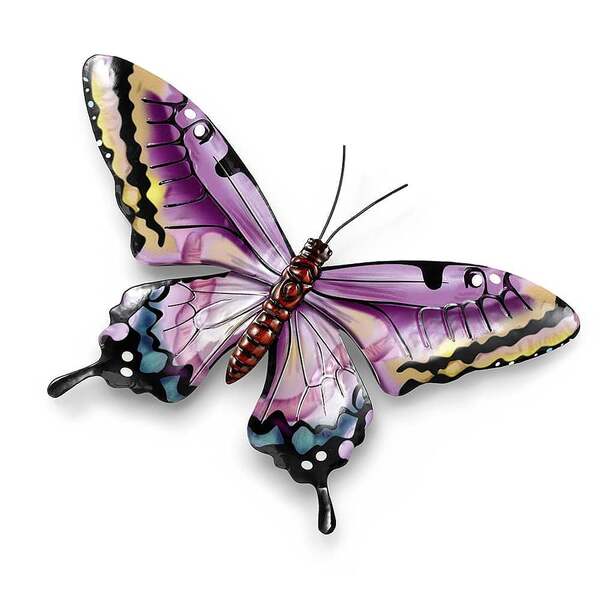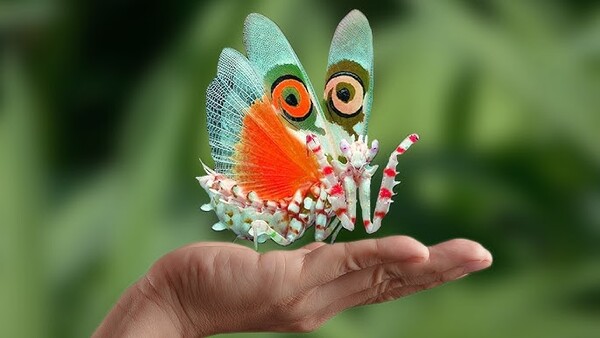Butterflies are some of the most beautiful and fascinating insects in the world, often admired for their vibrant colors and delicate wings. While most people recognize a butterfly by its colorful wings, fewer may know about its anatomy, especially its legs. In this article, we will answer the common question: How many legs does a butterfly have? and dive into some interesting facts about their legs and overall anatomy.

Butterflies, like all insects, have six legs. This is one of the key characteristics of insects, which belong to the class Insecta. The six legs are divided into three pairs, each attached to a different segment of the butterfly’s body: the thorax.
First Pair: The first pair of legs is usually the most noticeable. These are the longest and are positioned towards the front of the thorax.
Second Pair: The second pair is located slightly further back.
Third Pair: The third and final pair is the closest to the abdomen.
Despite having six legs, the first pair of legs in many butterfly species is often smaller or less functional compared to the other pairs. This is one of the most interesting aspects of butterfly anatomy!
While all insects have six legs, not all legs are used in the same way. For butterflies, their legs have evolved to serve specific purposes. Here’s how each set of legs is used:
Walking and Climbing: The second and third pairs of legs are mainly used for walking and climbing. These legs are long and strong enough to help the butterfly move around, especially when it’s on the ground or perching on a flower.
Sensory Functions: Butterflies use their legs as sensory tools. For example, their legs are equipped with sensors that help them taste and detect chemicals in plants. When a butterfly lands on a plant, it can "taste" it by walking on it, which helps them determine if the plant is a suitable place to lay eggs.
Reduced or Non-Functional First Pair: In some species of butterflies, the first pair of legs is much smaller than the others and is not used for walking. These legs are sometimes referred to as "vestigial," meaning they are a remnant of a more functional part of their evolutionary ancestors. In some species, the first pair of legs is almost invisible or appears in a much-reduced form.

Although some creatures like spiders and other arachnids have eight legs, butterflies are insects and, like all insects, they only have six legs. However, there are other insects that might have additional appendages, such as antennae or specialized mouthparts, but none of these count as legs. In the case of butterflies, their six legs are all that they need to thrive.
Butterfly legs, like other insect legs, are made from chitin, a hard, flexible material that provides structure and protection. Chitin is an exoskeleton material that all arthropods, including insects, spiders, and crustaceans, use to support their bodies. The legs of butterflies are covered in tiny sensory hairs that help them detect their surroundings and sense vibrations.
Unlike birds or bats, butterflies do not use their legs for flight. Their wings, not their legs, are responsible for flight. However, the legs play an essential role in stabilizing the butterfly while flying, especially when they are perched on flowers or other surfaces. Their legs help them balance and grip onto surfaces when they’re not in flight.

Butterfly Feet Have Taste Sensors: Butterflies have taste sensors on their feet that help them identify the right plants for feeding or egg-laying. When they land on a plant, they can taste it through the sensors on their legs.
Legs Are Covered in Hairs: The legs of butterflies are often covered in fine hairs, which can help them sense changes in their environment and even assist in capturing pollen when they land on flowers.
Butterfly Leg Colors: The color of a butterfly's legs can vary widely among species. Some butterflies have legs with bright colors, while others have them in more muted tones. The color of the legs can help camouflage the butterfly or even play a role in attracting mates.
Legs Can Regrow: If a butterfly loses a leg due to injury, it is possible for it to grow back. This regenerative process, however, depends on the stage of the butterfly’s life. In some cases, it’s only during the caterpillar stage (larval phase) or early pupation when regeneration can happen.

In summary, butterflies have six legs, just like all insects. These legs are crucial for movement, stability, and sensory functions, such as tasting plants to determine where to lay eggs. Although the first pair of legs is sometimes underdeveloped or vestigial, the remaining legs are used for climbing, walking, and even sensing the environment. Understanding butterfly anatomy helps us appreciate how these beautiful insects interact with the world around them.
By recognizing the fascinating roles that butterfly legs play in their daily lives, we gain a deeper understanding of their biology and how they survive in nature. Whether you are a butterfly enthusiast or just curious, knowing more about their anatomy can enhance your appreciation of these incredible insects!
animal tags: butterfly
We created this article in conjunction with AI technology, then made sure it was fact-checked and edited by a Animals Top editor.